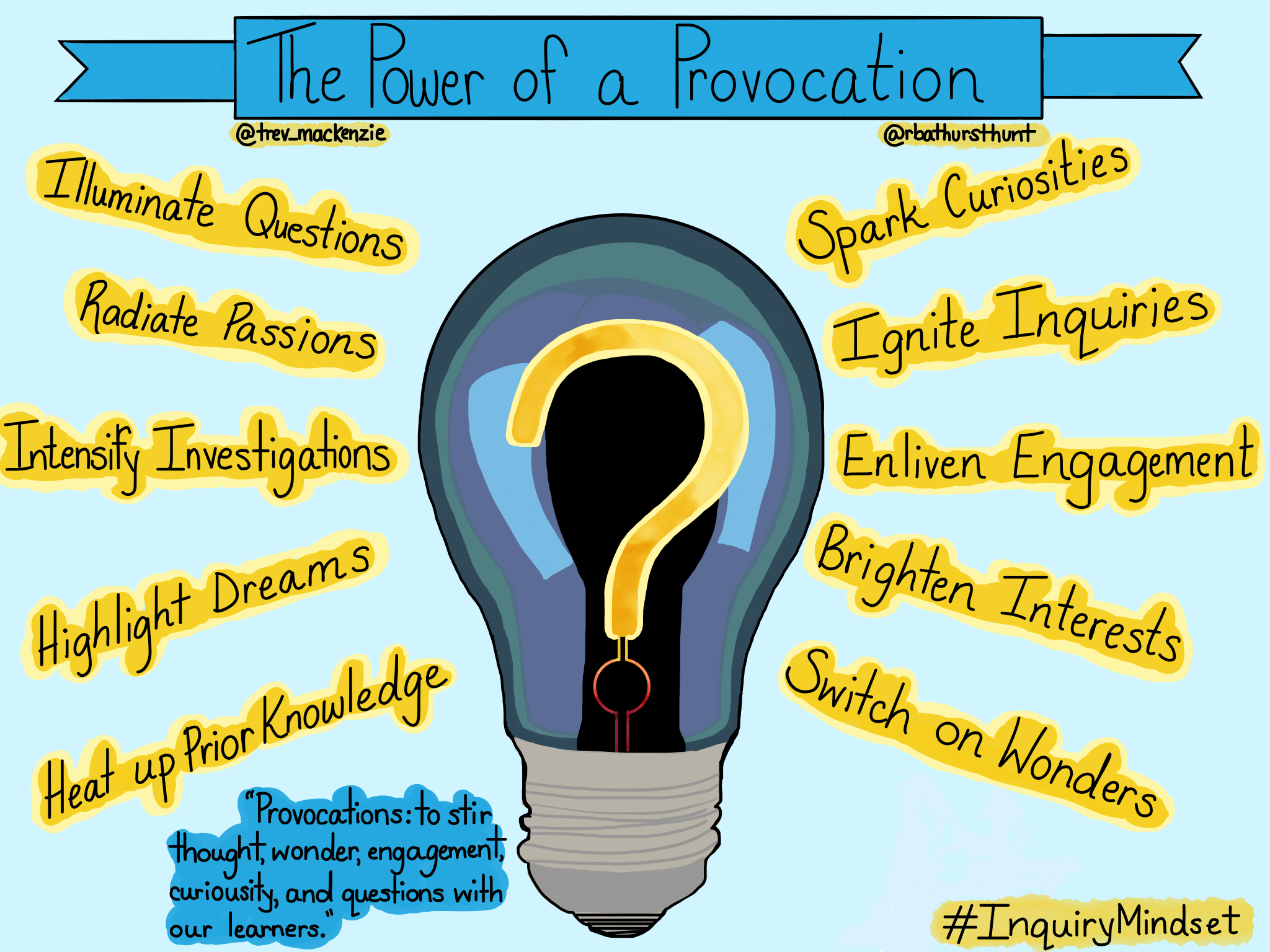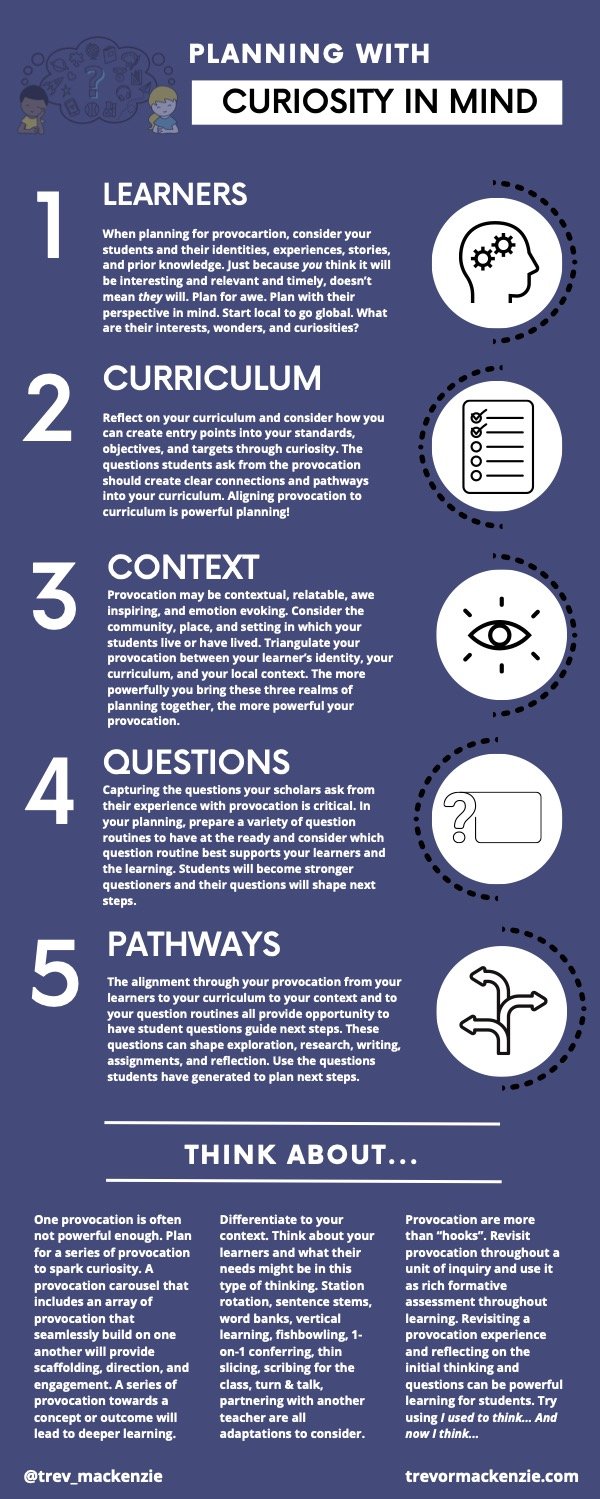Today’s guest lecturer, Trevor Mackenzie, was really awesome! He spent a lot of time talking with us about curiosity, and how to mindfully program students toward this in order to develop intrinsic motivation and student led engagement. This type of teaching also shows students that what they think and do within and outside of classrooms is inherently valuable. It was great to have a discussion based around practical application of inquiry based teaching because it enables us (the cohort) to further understand how these practices are possible and why they are important.

https://www.trevormackenzie.com/posts/2024/9/26/inquiry-is-curiosity
I really appreciated the emphasis on constructive feedback and how to actually give this during assessment for students’ work. The three main pillars of being kind, being specific and being helpful guide our assessments to honour students’ strengths, be really particular about what the feedback is on, and where/how they could grow within their work. I also respect Mackenzie’s approach to writing report cards with the students because it becomes more of a discussion, the hierarchy is disrupted, and there are no surprises as students are aware of exactly what is happening within the elusive grading system. Having a system of self assessment, peer assessment and teacher assessment is a great way to paint a more holistic picture of what is happening within the student’s work.

https://www.trevormackenzie.com/posts/2024/9/26/inquiry-is-curiosity
Finally, the classroom setup both physically and intangibly felt really important to me. Within Mackenzie’s classroom there are co-working tables, work alone spaces, lots of posters and infographics, including a success criteria that he co-designed with his students that hangs above a peer-assessment station. Mackenzie strongly believes in competency development and personalized goals, safety and comfortable within classroom spaces, reflection, revision, thoughtfulness, and care, which is all very apparent within the design of his classroom space. I find this important because I’m becoming more aware of how space and place dictates behaviours in classrooms, school environments and school cultures as a whole, and the driving question I am interested in working with currently is how do we engage & connect students directly with the outdoors/environment through art making? This is very closely linked with classroom design and indoor vs. outdoor spaces, and I’m looking forward to exploring this more!